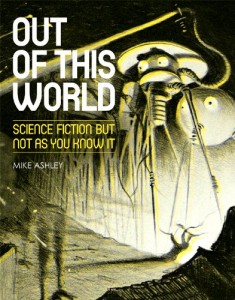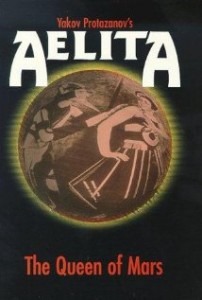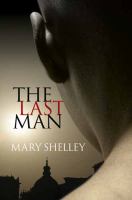Out of This World: Science Fiction But Not As You Know It
An Exhibition at the British Library (20 May – 25 September 2011)
Were the Brontës science fiction authors? The British Library includes some of their juvenilia, along with Branwell Brontë’s map of the Glasstown Confederacy, an imaginary land he and his famous sisters invented when they were children, in its current exhibition, Out of This World: Science Fiction But Not As You Know It.
 To be honest, when I first heard about it, I thought it was a bit of a stretch. I’m interested in the Brontë juvenilia and have probably read more of it than many Brontë fans. It is certainly fantasy writing. In numerous stories and novellas, the Bronte children chronicled the exploits of the inhabitants of Glasstown, inhabitants that include their hero, the Duke of Wellington, his children and literally hundreds of other characters, real and invented. Charlotte’s juvenilia in particular also contains some of the wonderful paranormal elements we see again in her later works—ghost sightings, preternatural warnings and the like. But the Brontës as science fiction authors? I didn’t think so.
To be honest, when I first heard about it, I thought it was a bit of a stretch. I’m interested in the Brontë juvenilia and have probably read more of it than many Brontë fans. It is certainly fantasy writing. In numerous stories and novellas, the Bronte children chronicled the exploits of the inhabitants of Glasstown, inhabitants that include their hero, the Duke of Wellington, his children and literally hundreds of other characters, real and invented. Charlotte’s juvenilia in particular also contains some of the wonderful paranormal elements we see again in her later works—ghost sightings, preternatural warnings and the like. But the Brontës as science fiction authors? I didn’t think so.
Still, it was the inclusion of the Brontës that drew me in to this exhibit on my one precious day in London last Friday, and I’m so glad I went. Seen in a historical context, I did begin to see the Brontë juvenilia, with its use of both real and made-up characters, as part of a tradition of parallel worlds, a tradition that embraces works like Philip K. Dick’s The Man in the High Castle, an alternate history in which Germany wins WWII.
But the Brontës are really just a miniscule part of this exhibit. The curator, Andy Sawyer, has created a wonderfully interactive space using film, sound and multimedia to enhance the more static displays. You can give a computer a Turing test (It fails pretty miserably.) or watch excerpts from the 1924 silent film Aelita Queen of Mars. (Best line: “Let’s meet tonight at the tower of radiant energy.”)
I was amazed by what I learned about the science fiction genre, amazed by how old it is. Did you know that in 160 AD, Lucian of Samosta wrote his True History, in which he is transported to the moon by a whirlwind? He describes horse-ants, dog-faced men and moon people with removable ears and eyes.
And did you know that, in addition to writing Frankenstein, Mary Shelley also wrote a dystopian plague novel called The Last Man (1826) considered to be the first science-fiction disaster novel? It spawned a great trend in dystopian novels at the time, a trend we are seeing resurrected today.
 If you have any interest in fantastical fiction of any kind, I highly recommend this exhibit. The best part is, even if you don’t live in London, you can explore the history of sci-fi with the British Library’s highly detailed and beautifully illustrated catalogue for sale on their website or on amazon.com. You can also view some wonderful video interviews of current science fiction authors on the British Library’s website.
If you have any interest in fantastical fiction of any kind, I highly recommend this exhibit. The best part is, even if you don’t live in London, you can explore the history of sci-fi with the British Library’s highly detailed and beautifully illustrated catalogue for sale on their website or on amazon.com. You can also view some wonderful video interviews of current science fiction authors on the British Library’s website.
And if you’re in Torontothis November, author Megan Crewe and I will be giving a related talk at the November 16th CANSCAIP Meeting called Writing the Unreal. Details should be going up on the CANSCAIP website later this month.




 Hi! I'm Lena, a young adult fantasy author from Toronto.
Hi! I'm Lena, a young adult fantasy author from Toronto.
Fascinating! That the science fiction genre is really that old is not too surprising once you think about it. Human beings are gifted with their imaginations and our ability to communicate. That someone thousands of years ago envisioned a different world as they looked at the moon and then wrote about it probably happened even before his time. I’d love to see that exhibit! Great post – thanks for sharing!
Great post. And I wanted to tell you that Cabinet of Curiosities blog has presented you with a Liebster award. http://fivecuriosities.blogspot.com/
Thanks Dawn! It really was an inspiring exhibit.
Thanks so much, Pat! I’ll pass that on soon!